Ohio Reptiles and Amphibians, 2018
Here are some reptiles, amphibians, and a few other things that I observed
in southeastern Ohio in 2018, in mostly chronological order.
The night on February 14 provide some rain and it was also reasonable
warm (around 52 F at sunset). Some amphibians were seen moving.

A Spotted Salamander (Ambystoma maculatum) out and about.
Several of these were seen.

A Streamside Salamander (Ambystoma barbouri). We visited one of the
few places in southeast Ohio where this species occurs.
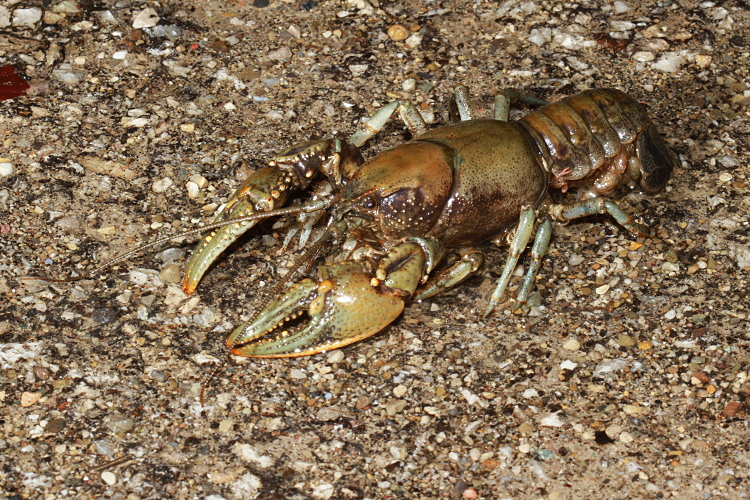
A large crayfish (Cambarus bartonii cavatus) seen crossing the road.

A closer look. It is a mother carrying her babies (instars) under her tail.

A young Streamside Salamander (Ambystoma barbouri).
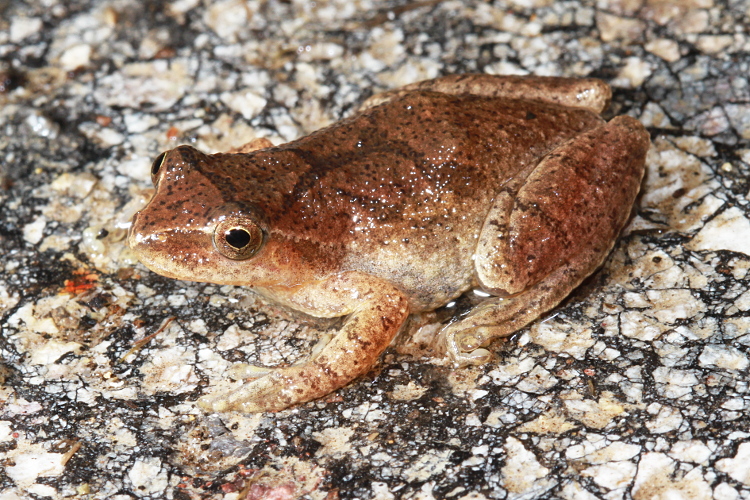
A Spring Peeper (Pseudacris crucifer).

The only Wood Frog (Rana sylvatica) of the night.

Another young Streamside Salamander (Ambystoma barbouri).

A young Spotted Salamander (Ambystoma maculatum).
The conditions the next night were similar, but a bit warmer.
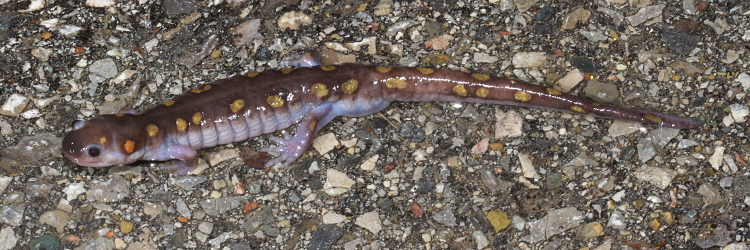
A Spotted Salamander (Ambystoma maculatum). This is only the
the second one I've seen in Ohio that has orange spots on the side
of its head. The other one I saw in 2008 and was only about five miles
from where this one was found.

A Jefferson Salamander (Ambystoma jeffersonianum).

A Wood Frog (Rana sylvatica). Several off these were seen and they
were calling in one location.

A Jefferson Salamander (Ambystoma jeffersonianum) observed crossing the
double yellow lines.
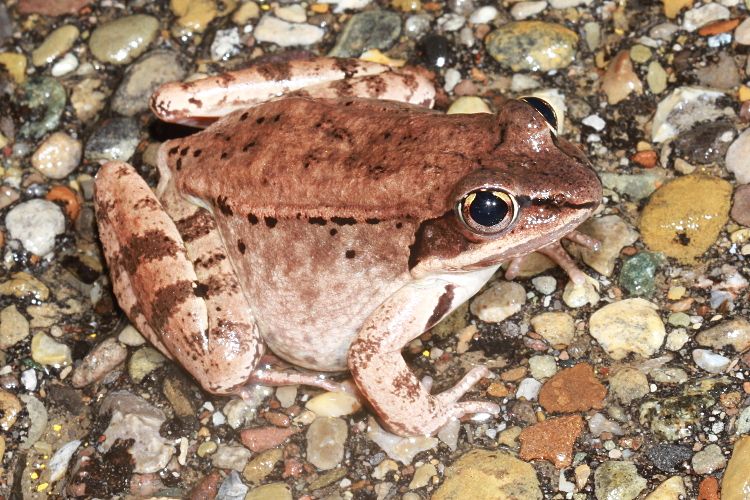
Another Wood Frog (Rana sylvatica). I bet this one is a female that
is full of eggs.

A Spotted Salamander (Ambystoma maculatum).

A Smallmouth Salamander (Ambystoma texanum).
This animal was photographed in a driving rain. There was so much
water you can see a meniscus connecting its chin to the road --
and the salamander was on the move when the photo was taken!
We only saw one of these, at a location near the glacial boundary.

A Western Chorus Frog (Pseudacris triseriata).

Wood Frog eggs (Rana sylvatica), observed in the small pond in
our front yard on February 25.

A quick photo of a couple of mommy Four-toed Salamanders
(Hemidactylium scutatum) and their nest that I saw on
February 28. This makes two years in a row that I have observed this in
February in SE Ohio. Must be global warming...

Eastern Newts (Notophthalmus viridescens) snacking on Ambystoma eggs.

A ridgetop pond.

Toad eggs seen in a roadside ditch on March 4 -- crazy early.
I assume they are American Toads (to be).

A Mountain Chorus Frog (Pseudacris brachyphona).

Marbled Salamander (Ambystoma opacum) larvae.

A closer look at one of the larvae.

This southeast Ohio railroad tunnel was abandoned in 1916.
Kinda puts you in your place.

A Mud Salamander (Pseudotriton montanus) larva.

A closer look at the larva.

A Northern Slimy Salamander (Plethodon glutinosus), as found under
a rock on March 30. In my experience, this is very early in the season to
be seeing this species around here.

An Eastern Newt (Notophthalmus viridescens), eft stage, found
crawling on the forest floor.

An abandoned strip-mine pond. Interestingly, Four-toed Salamanders
(Hemidactylium scutatum), Spotted Salamanders
(Ambystoma maculatum), and Wood Frogs (Rana sylvatica)
breed here.

A waterfall on a small creek. It was flowing pretty well on this
day (30 March), due to all of the rain we had recently.

Mud Salamander (Pseudotriton montanus) habitat,
a small pool in the floodplain of a creek.
This is after I dipnetted it. Planted my flag. Two larvae were found here.

The larvae. They will morph in a month or two.

A closer look at one of them.

A hatchling Mud Salamander larva (Pseudotriton montanus) found nearby.

More Mud Salamander habitat. Two Mud Salamander larvae and one
Southern Two-lined Salamander (Eurycea cirrigera) larva were
found here.

The Southern Two-lined Salamander larva.

Some more larvae, from another area. The big one is a
Southern Two-lined Salamander and the smaller ones are
Long-tailed Salamander larvae (Eurycea longicauda).

A Long-tailed Salamander larvae.

The darker larva is a young Red Salamander (Pseudotriton ruber);
the smaller one is a Long-tailed Salamander.

A large Red Salamander larva.

A small Red Salamander.

A Long-tailed Salamander larvae.

A spring perched on a hillside. The shallow pool is home to
Red Salamander (Pseudotriton ruber) larvae.

A large Red Salamander larva from the pool.

A closer look.

A Spotted Salamander (Ambystoma maculatum) larva.

Another Spotted Salamander larva.

A Four-toed Salamander (Hemidactylium scutatum) with eggs found
under moss.

My first snake of the year, a Black Kingsnake
(Lampropeltis getula nigra), found on April 12.
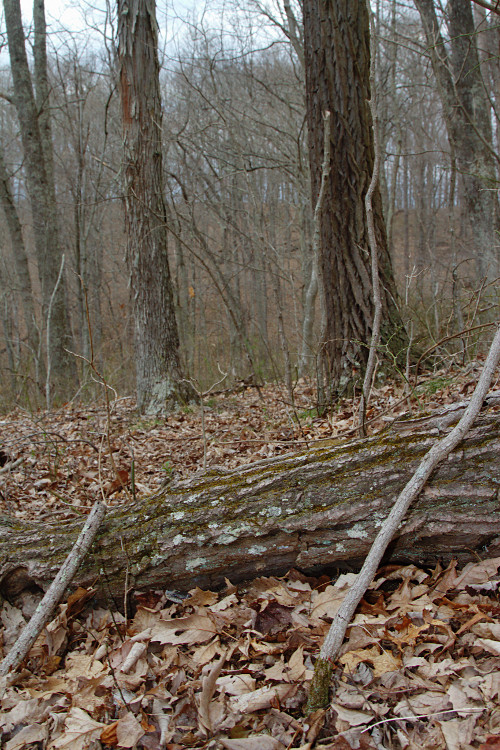
Hiking in the woods a couple of days later, I walked up on this.
Gotta wonder how many times I just walk by situations like this...
A Black Ratsnake (Elaphe obsoleta) next to a log, as found.
It was not a warm day, temps were in the 50s.

A closer look at the Black Ratsnake.

A Spotted Salamander (Ambystoma maculatum) larva, just about
ready to hatch.

A hatchling Mud Salamander (Pseudotriton montanus) larva.
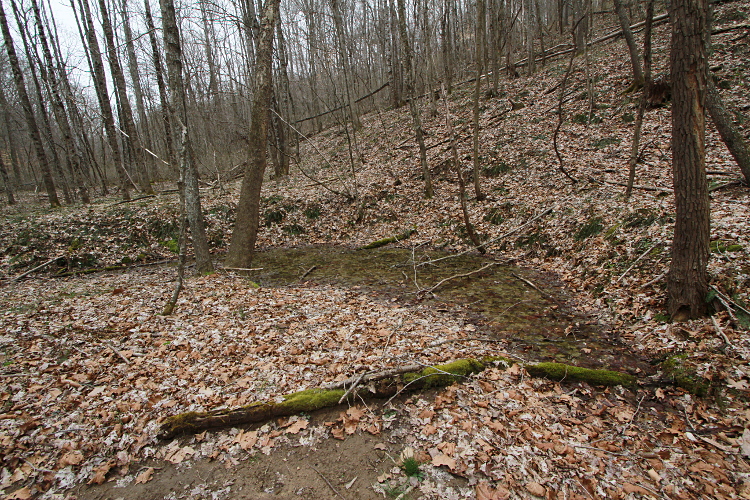
Ryan Wagner and I visited a Mud Salamander spot that I had not been to in
nearly 11 years.
See
this report
from when Jason Folt and I found this spot.
This year, it still looks the same. We saw a bunch of larvae, but no adults.
This pool is also depicted in Figure 21-11 of Amphibians of Ohio.

Two of the Mud Salamander larvae.

Another look at larvae.

All of the Mud Salamander larvae we found at this spot.
No other salamander species were seen here.

Nearby, we found a spot where a spring feeds into a lake.
Dipnetting yielded the following:
a Red Salamander larva (Pseudotriton ruber),
several Two-lined Salamander larvae (Eurycea cirrigera),
Green Sunfish (Lepomis cyanellus), and
Mosquito Fish (Gambusia affinis).
A strange cast of characters to find together, at least in my experience.

A Green Sunfish.

A Mosquito Fish.

This Pickerel Frog (Rana palustris) was seen in the vicinity.

As was this Mud Salamander (Pseudotriton montanus) larva.
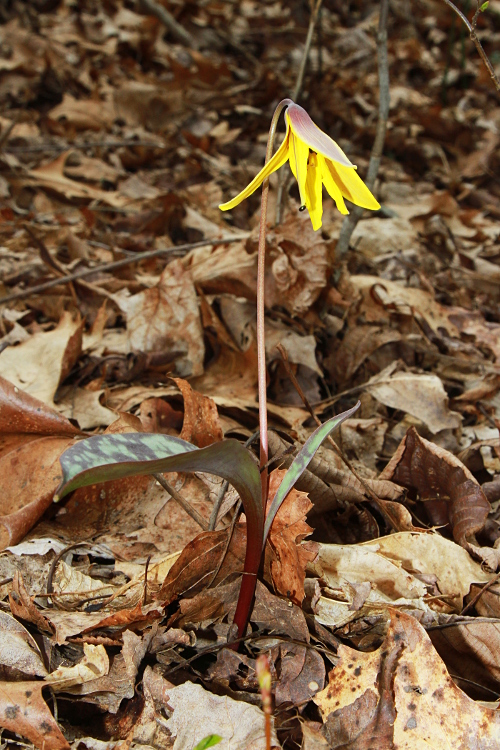
A Trout Lily.
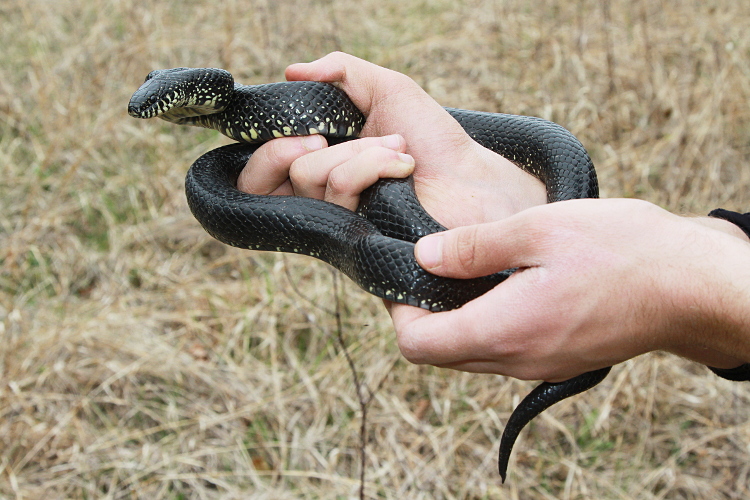
A fairly large Black Kingsnake (Lampropeltis getula nigra).

A small sign seen on a tree in an obscure part of the National Forest.
I like how the growth of the tree pulled the nail out of the
upper right corner.
Failed the test of time. The style screams 1970s.

I walked up on this turkey nest one day. The mother turkey flushed when
I was just a few feet away. Definitely makes your heart skip a beat...
even though it's happened to me several times over the years.

A Painted Turtle (Chrysemys picta) found crossing the road.
The long claws indicate that it is a male -- Edward Scissorhands...

A Black Racer (Coluber constrictor) up in a tree. I initially
saw it on the grounds, but when I spooked it, it went up a tree.
It was about 12 feet or so up, and didn't seem to mind my presence
any more.

A Kentucky Spring Salamander (Gyrinophilus porphyriticus duryi)
larva. This was from west of the Scioto River -- not quite southeat Ohio.

I helped a bunch of high school sophomores with a bioblitz event in May.
This little Painted Turtle (Chrysemys picta) was one of the stars
of the show. Baby animals have a “cuteness” factor and turtles
are no exception.

A Black Ratsnake (Elaphe obsoleta) that I found crossing the road.
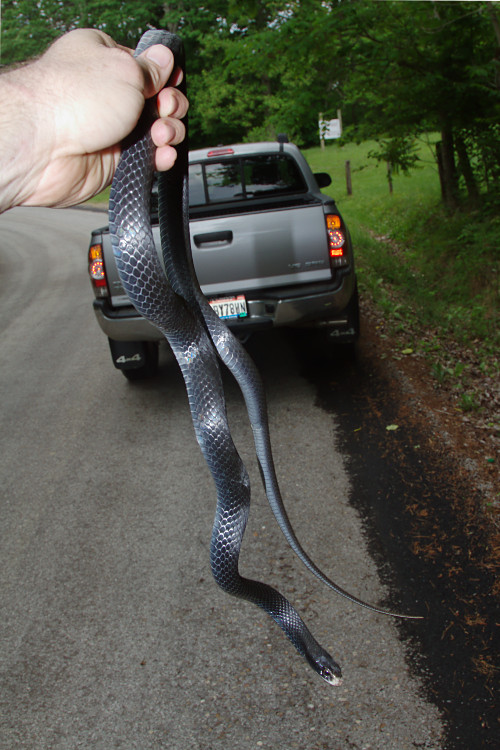
A Black Racer (Coluber constrictor) that I found crossing the road.
I was able to catch this one, which doesn't usually happen, especially when
I am by myself.

A Black Kingsnake (Lampropeltis getula nigra), as found under cover.

A Black Racer (Coluber constrictor), in pre-shed condition.

A Black Kingsnake (Lampropeltis getula nigra), as found under cover.

A pair of Milksnakes (Lampropeltis triangulum), almost
as found under a board.

A Worm Snake (Carphophis amoenus), as found between folds of carpet.
It always amazes me how white/grey they can be when deep in shed.

A Black Kingsnake (Lampropeltis getula nigra) found under a board.
This one was very defensive.

A Black Kingsnake (Lampropeltis getula nigra), as found under carpet.
It is in pre-shed condition.

A Red-bellied Snake (Storeria occipitomaculata). This is a species that
I do not see very often. So, needless to say, I was very happy to see it.

The reason for the name...

A closer look.
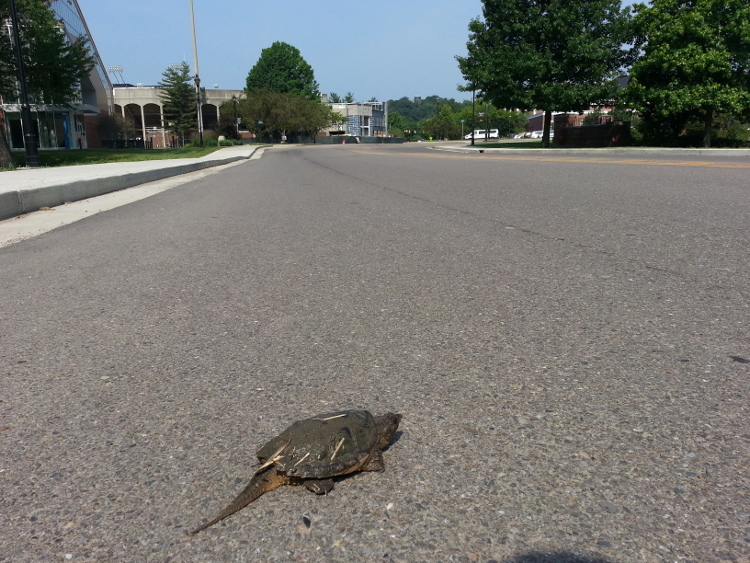
A sub-adult Snapping Turtle (Chelydra serpentina) I saw on campus.
When I drove past it was on the sidewalk. By the time I stopped and walked
back it was well into the road. I moved it to the pond it was heading towards.
Fortunately, it was Sunday morning and traffic was nil.

A closer look.

A Smooth Earth Snake (Virginia valeriae).

A closer look.

Another Red-bellied Snake (Storeria occipitomaculata).
Two in one year makes this a banner year for them.
This photo show it as I found it, while I was rummaging through an
erosion-control tarp.

A posed photo of the same snake.

Some racer eggs I saw under a carpet on June 24, with Ryan Wagner.
Interestingly, you can also see racer eggs from last year that
successfully hatched.

On August 18, I revisited the site. It turns out the eggs were hatching.
Several of the eggs had slits in them, made by the babies inside the eggs.
I picked one of the up, and the baby racer crawled out in my hand.
I set the snake down and snapped this photo. I can also confirm that
they like to bite, starting from day zero.

Some snake eggs that Ryan Wagner and I found, between some folds of carpet.
They seemed to be just a little bit too large to be ringneck eggs,
so I collected them to see what develops...

Right away, two of them turned out to be no good (infertile/fungus/whatever).
On or about August 17, the remaining three hatched.
It turns out they were Rough Green Snakes (Opheodrys aestivus).
I let them go where they came from.
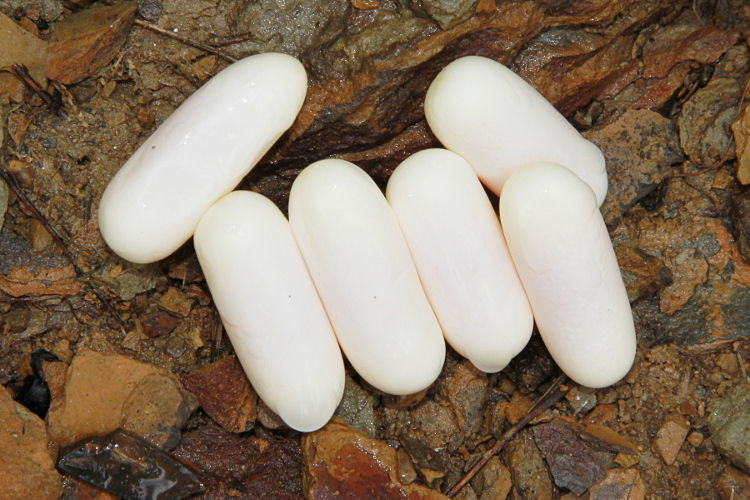
Some other snake eggs that I saw in late July.
I believe these were ringnecks. Unfortunately, the next time that
I checked on them, they had been predated upon by something.
Well that's the way it goes at these rock and roll shows...
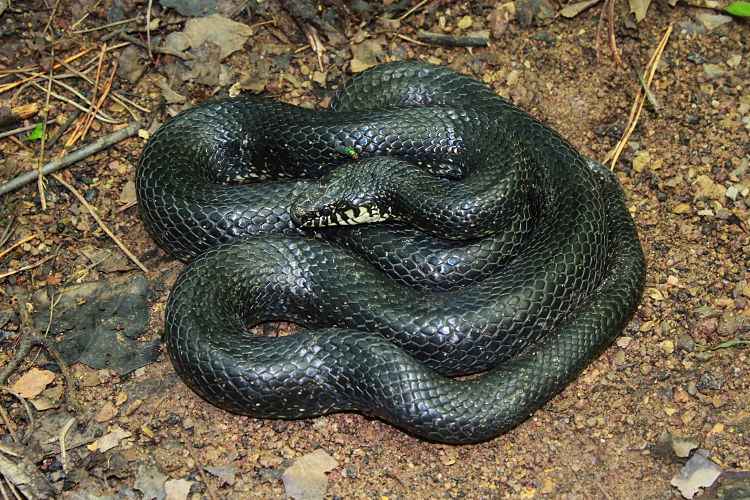
A Black Kingsnake (Lampropeltis getula nigra).
As is often the case, there is a blue bottle fly photobombing.
These flies are attracted to their musk. I swear I never see these
flies without the help of a kingsnake. I wonder if anybody has every
researched this...?
... and pass the bottle when he got dry
and brush away the blue-tail fly
Jimmy crack corn, and I don't care...

A Black Racer (Coluber constrictor) and a Milksnake
(Lampropeltis triangulum), as found under a board.

A Dekay's Snake (Storeria dekayi), almost as found under cover.

Some snake eggs found on 4 August 2018 under a sheet of carpet.
I'm pretty sure they were Black Kingsnake (Lampropeltis getula nigra)
eggs. I collected them, but none of them turned out to be good.
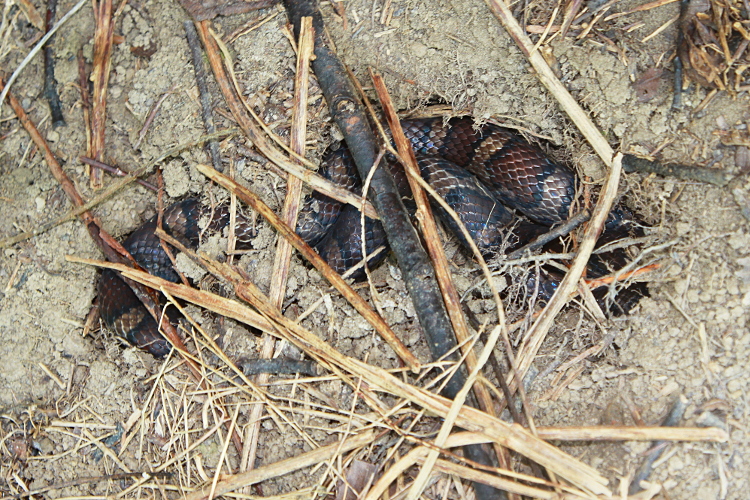
A Milksnake (Lampropeltis triangulum), as found under a board.

Roxanne was looking out the window of our den one morning in early August,
admiring her flowers. She spotted this. We opened up the window and
I snapped a photo. It's a metamorph (recently transformed from a tadpole)
Cope's Gray Treefrogs (Hyla chrysoscelis). And a Hydrangea.

A Black Widow spider that Ryan found.

Ryan and a couple of his buddies. We had to work pretty hard to turn
up this Black Kingsnake (Lampropeltis getula nigra).
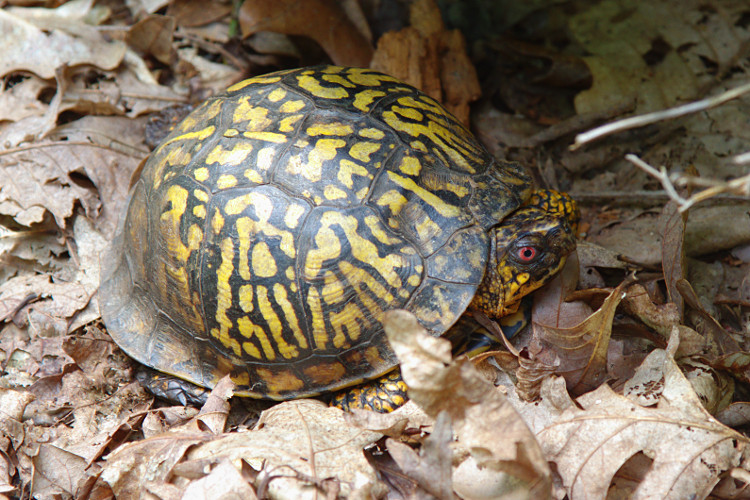
A random Eastern Box Turtle (Terrapene carolina) that I spotted.

I spy with my little eye...
A Copperhead (Agkistrodon contortrix), as spotted in a hollow log
with the help of a flashlight.

A Smooth Earth Snake (Virginia valeriae), as found between folds
of carpet.

A small American Toad (Bufo americanus), found hopping around on
the forest floor. The angle of that front foot looks painful, but that's
how they are put together.

Another American Toad, found on the road in the rain. This is
a nice red one.

A Long-tailed Salamander (Eurycea longicauda) found out on the road
in the rain.

A Black Ratsnake (Elaphe obsoleta), as spotted in the woods.
It is in pre-shed condition. It is rather unusual, in my experience,
to find snakes in pre-shed condition out and about. I think it was
just basking, as there was a hollow log nearby.

A closer look.

An Eastern Box Turtle (Terrapene carolina) found snacking on
a mushroom. 2018 was an abnormally wet year, which led to plenty of mushrooms.

A Black Kingsnake (Lampropeltis getula nigra), as found under
cover. I was rather happy to see this one, because it was a new area for me.
On Halloween night we had some nice warm rains. Some amphibians
were seen out and about.

A Western Chorus Frog (Pseudacris triseriata).

A Cope's Gray Treefrogs (Hyla chrysoscelis).

A Southern Two-lined Salamander (Eurycea cirrigera).

A Smallmouth Salamander (Ambystoma texanum).

A Dekay's Snake (Storeria dekayi) was also seen. This individual
has very well-defined longitudinal stripes.
In addition, about a dozen of these were seen dead on the road.

A Kentucky Spring Salamander (Gyrinophilus porphyriticus duryi).
You need to travel west of the Scioto River in Ohio to get these.
That's it for 2018.






















































































































